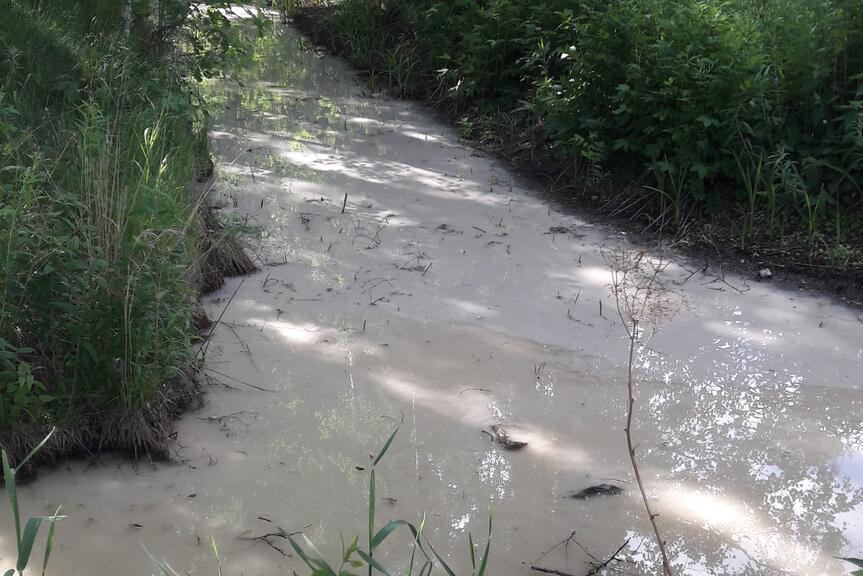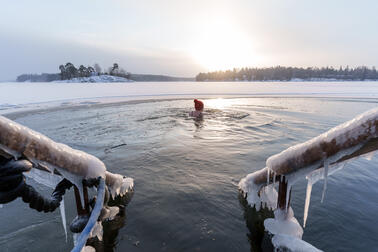
The water quality of streams is affected by several factors, and events in the catchment area, as well as the stormwater leaching from it, have a major impact on their water quality and colour. As a rule, stormwater is not treated but flows to nearby water bodies, such as a stream and later the sea.
Streams stained mainly by rock dust from geothermal well drilling
One topical explanatory factor for the white-stained streams is the drilling of geothermal wells. Other pollutants may also end up in streams in certain abnormal situations and stain the water white or some other colour. For example, the recent spilling of dairy into the water system of Mellunkylänpuro may sound harmless, but milk causes problems in water systems by consuming oxygen from the water, which is harmful to living organisms.
The City of Helsinki aims to be carbon-neutral by 2035, and utilising geothermal heat for the heating needs of Helsinki is a step towards this goal. However, the drilling of geothermal wells generates rock dust, which, when mixed with the water used in the drilling, stains the water either white, pink, reddish-brown or grey depending on the bedrock of the area.
Helsinki instructs construction sites to treat geothermal well drilling water
The drilling water of geothermal wells must be treated at the worksite so that most of the rock dust settles into the treatment systems used. However, the rock dust is so fine that it takes a very long time to settle, so worksite water containing rock dust may be carried to a stream along stormwater lines. The rock dust itself is not toxic, but in addition to aesthetics, it can cause harm to the fish and other organisms living in the stream. It also silts up the bottom of the stream, which spoils, for example, trout spawning grounds.
The environmental protection authority monitors various projects and activities to ensure that they do not pollute or threaten to pollute the environment and the water system. However, each operator’s self-supervision holds primary responsibility for verifying the quality of the water they discharge. In addition, Environmental Supervision issues opinions to the authorities on the permits issued by the Building Control Services, which also include water treatment. Environmental Supervision also carries out inspections on sites based on damage reports.
Contact the municipal environmental protection authority if needed
If you have noticed an abnormal colour or cloudiness in a stream and suspect environmental pollution, you can contact the municipal environmental protection authority. In Helsinki, you can contact the city’s Environmental Supervision by email at kymp.ymparistovalvonta@hel.fi(Link opens default mail program) .
Please provide as detailed information as possible about the time and the exact location of the observation. It is also a good idea to go upstream and try to spot the exact origin of the abnormal cloudiness or colour. With this information, Environmental Supervision will work to identify the cause and intervene if necessary.


